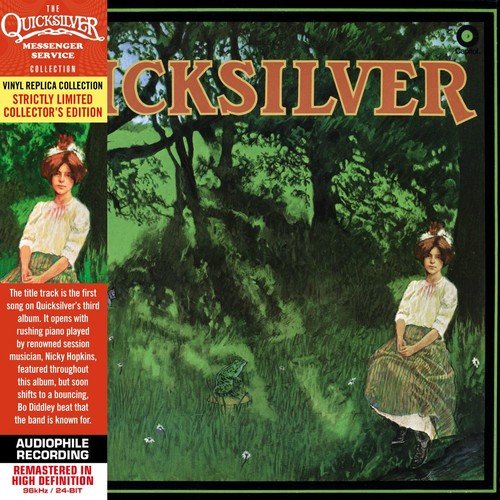

- SHADY GROVE QUICKSILVER MESSENGER SERVICE ALBUM FULL
- SHADY GROVE QUICKSILVER MESSENGER SERVICE ALBUM WINDOWS
If a little sullied by the fact that around the time of release, a burnt out Gary Duncan left the band for the rest of the year on sabbatical. For any guitarist, Happy Trails is – and I hate the word, usually – an awesome treat a tour-de-force. However, Maiden Of The Cancer Moon and Calvary are studio recordings from early 1969 (despite side-long suite presentation on either side of the LP), as is the closing brief verse of the old country chestnut that titled the album.

It wasn’t simply a live album, although their trademark extended Bo Diddley reworkings of Who Do You Love (all of the first side) and Mona are (or at least sound to be) largely untampered with, aside from editing. Some 1968 dates at the Fillmore(s) were taped, edited and put out on Happy Trails, their second LP. Like any good Haight-Ashbury act, their improvisational concert style delighted the local crowds from ballroom to ballroom.
SHADY GROVE QUICKSILVER MESSENGER SERVICE ALBUM WINDOWS
Ah, sod it: the album is so good, let’s mention Light Your Windows and It’s Been Too Long – blessed with Cipollina’s call and response solo (with himself via stereo panning!) to boot. At one point Cipollina’s guitar literally growls, a technique he’d invented and became known for. Beginning with Pride Of Man (Hamilton Camp folk turned acid rock masterpiece) via the poppier Dino’s Song (by Valenti, of course) to lengthier tracks Gold & Silver, a jazzy guitar tour de force where Duncan shines and finally The Fool – the psychedelic masterpiece. Their eponymous debut, sporting that iconic black cover with red lettering (I’m wearing the T-shirt as I type), was stunning. But they’d recorded: with Steve Miller and Mother Earth, they appeared in the hippie flick Revolution and the accompanying soundtrack album in 1967, playing Codine (the Buffy Sainte-Marie song) and the folk tune Babe I’m Gonna Leave You revved up a gear with fine guitar breaks.

Quicksilver held off signing a record deal willy-nilly and release of their debut was late compared to their peers: 1968, nearly two years after the first Jefferson Airplane record and a year after that of the Dead, when the hippie scene was already over according to some. And Dino Valenti – who was a folkie, and a songwriter by trade under various pen names (Hey Joe, Let’s Get Together) – was supposed to be in the band but got busted and jailed, and shut out of the picture. Jim Murray, a rhythm guitarist and blues harp player was in, but left before the first LP was recorded. Skip Spence had been a member, then went on to Jefferson Airplane and thence Moby Grape. The band had started in 1965 and settled into the above quartet by mid-late 1967. David Freiberg was the only folkie of the four that cut the debut LP, but he was playing bass, not your average folk musician’s choice. Drummer Greg Elmore came with Duncan from a group called The Brogues (minor hit I Ain’t No Miracle Worker). Not Quicksilver – guitarists John Cipollina and Gary Duncan were true rock and rollers. In fact, they already stood out: most West Coast bands were folkies that bought amplifiers. And that’s what Quicksilver Messenger Service did.
SHADY GROVE QUICKSILVER MESSENGER SERVICE ALBUM FULL
In late sixties San Francisco, a city full of bands with guitarists fond of the extended jamming so in tune with the times, there was one easy way of standing out from the crowd.


 0 kommentar(er)
0 kommentar(er)
